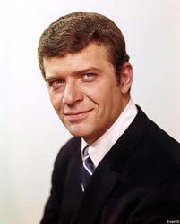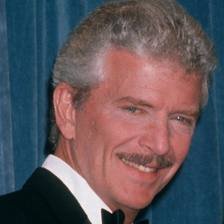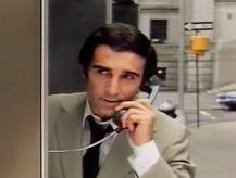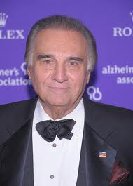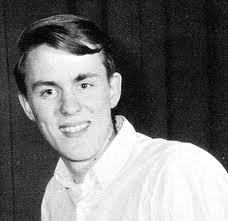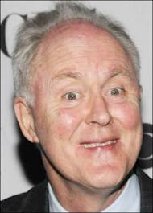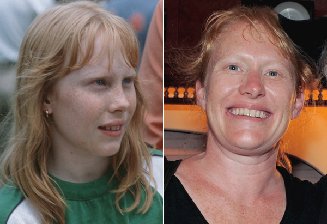Various methods of transporting children have been used in different cultures and times. These methods include baby carriages (prams in British English), infant car seats, portable bassinets (carrycots), strollers (pushchairs), slings, backpacks, baskets and bicycle carriers.
The large, heavy prams (short for perambulator), which had become popular during the Victorian era, were replaced by lighter designs during the latter half of the 1900s.
Infant carrying likely emerged early in human evolution as the emergence of bipedalism would have necessitated some means of carrying babies who could no longer cling to their mothers and/or simply sit on top of their mother's back.
On-the-body baby carrying started being known in western countries in the 1960s, with the advent of the structured soft pack in the mid-1960s. Around the same time, the frame backpack quickly became a popular way to carry older babies and toddlers. In the early 1970s, the wrap was reintroduced in Germany. The two ringed sling was invented by Rayner and Fonda Garner in 1981 and popularized by Dr William Sears starting in around 1985. In the early 1990s, the modern pouch carrier was created in Hawaii. While the Chinese mei tai has been around in one form or another for centuries, it did not become popular in the west until it was modernized with padding and other adjustments. It first became popular and well known in mid-2003.
Wheeled devices are generally divided into prams, used for newborn babies in which the infant normally lies down facing the pusher, and the strollers, which are used for the small child up to about three years old in a sitting position facing forward.
History
William Kent developed an early stroller in 1733. In 1733, the Duke of Devonshire asked Kent to build a means of transport that would carry his children. Kent obliged by constructing a shell shaped basket on wheels that the children could sit in. This was richly decorated and meant to be pulled by a goat or small pony. Benjamin Potter Crandall sold baby carriages in the US in the 1830s which have been described as the "first baby carriages manufactured in the US" Another early development was F.A. Whitney Carriage Company. His son, Jesse Armour Crandall was issued a number of patents for improvements and additions to the standard models. These included adding a brake to carriages, a model which folded, designs for parasols and an umbrella hanger. By 1840, the baby carriage became extremely popular. Queen Victoria bought three carriages from Hitchings Baby Store.
The carriages of those days were built of wood or wicker and held together by expensive brass joints. These sometimes became heavily ornamented works of art. Models were also named after royalty: Princess and Duchess being popular names, as well as Balmoral and Windsor.
In June 1889, an African American man named William H. Richardson patented his idea of the first reversible stroller. The bassinet was designed so it could face out or in towards the parent. He also made structural changes to the carriage. Until then the axle did not allow each wheel to move separately. Richardson's design allowed this, which increased maneuverability of the carriages. As the 1920s began, prams were now available to all families and were becoming safer, with larger wheels, brakes, deeper prams, and lower, sturdier frames.
In 1965, Owen Maclaren, an aeronautical engineer, worked on complaints his daughter made about travelling from England to America with her heavy pram. Using his knowledge of aeroplanes, Maclaren designed a stroller with an aluminium frame and created the first true umbrella stroller. He then went on to found Maclaren, which manufactured and sold his new design. The design took off and soon "strollers" were easier to transport and used everywhere.
In the 1970s, however, the trend was more towards a more basic version, not fully sprung, and with a detachable body known as a "carrycot". Now, prams are very rarely used, being large and expensive when compared with "buggies" (see below). One of the longer lived and better known brands in the UK is Silver Cross, first manufactured in Hunslet, Leeds, in 1877, and later Guiseley from 1936 until 2002 when the factory closed. Silver Cross was then bought by the toy company David Halsall and Sons who relocated the head office to Skipton and expanded into a range of new, modern baby products including pushchairs and "travel systems". They continue to sell the traditional Silver Cross coach prams which are manufactured at a factory in Bingley in Yorkshire.
Since the 1980s, the stroller industry has developed with new features, safer construction and more accessories.
Prams
Larger and heavier prams, or perambulators, had been used since their introduction in the Victorian era; prams were also used for infants, often sitting up. The term carrycot became more common in the UK after the introduction of lighter units with detachable baby carriers in the 1970s.
As they developed through the years suspension was added, making the ride smoother for both the baby and the person pushing it.
The word pram is etymologically a shortening of its now less common synonym perambulator.
Strollers
'Strollers' or 'pushchairs/buggies' (British English), are used for small children up to about three years old in a sitting position facing forward.
"Pushchair" was the popularly used term in the UK between its invention and the early 1980s, when a more compact design known as a "buggy" became the trend, popularised by the conveniently collapsible aluminium-framed Maclaren buggy designed and patented by the British aeronautical designer Owen Maclaren in 1965. "Buggy" is the usual term in the UK (sometimes "pushchair"); in American English, buggy usually refers to a four-wheeled vehicle known as a quad or quad bike in the UK. "Stroller" is the usual term in the USA. Newer versions can be configured to carry a baby lying down like a low pram and then be reconfigured to carry the child in the forward-facing position.
A variety of twin pushchairs are manufactured, some designed for babies of a similar age (such as twins) and some for those with a small age gap. Triple pushchairs are a fairly recent addition, due to the number of multiple births being on the increase. Safety guidelines for standard pushchairs apply. Most triple buggies have a weight limit of 50 kg and recommended use for children up to the age of 4 years.
A travel system is typically a set consisting of a chassis with a detachable baby seat and/or carrycot. Thus a travel system can be switched between a pushchair and a pram. Another benefit of a travel system is that the detached chassis (generally an umbrella closing chassis) when folded will usually be smaller than other types, to transport it in a car trunk or boot. Also, the baby seat will snap into a base meant to stay in an automobile, becoming a car seat. This allows undisturbed movement of the baby into or out of a car and a reduced chance of waking a sleeping baby.
Another modern design showcases a stroller that includes the possibility for the lower body to be elongated, thereby transforming the stroller into a kick scooter. Steering occurs by leaning towards either side. Depending on the model, it can be equipped with a foot- and/or handbrake. Speeds up to 10 mph can be reached. The first stroller of this kind was the so-called "Roller Buggy", developed by industrial designer Valentin Vodev in 2005. In 2012 the manufacturer Quinny became interested in the concept and teamed up with a Belgian studio to design another model.
Ever wonder how the restaurants make their onion rings so crispy-special? With our recipe for Crispy Buttermilk Onion Rings, you can too! Now, all you need to figure out is what you'll be dipping 'em into!
- 2 Spanish-type onions
- 3 cups buttermilk
- 1 cup all-purpose flour
- 1 1/2 teaspoons baking powder
- 1 teaspoon salt
- 1/4 teaspoon cayenne pepper
- 1 tablespoon vegetable oil
- 1 teaspoon lemon juice
- 1 egg, beaten
- 2/3 cup water
- 1 cup vegetable oil for frying
- Peel onions and cut into 1/3-inch slices; separate into rings.
- Pour buttermilk into a large bowl; add onion rings and soak 30 minutes.
- In another large bowl, combine flour, baking powder, salt, cayenne pepper, 1 tablespoon vegetable oil, the lemon juice, egg, and water; stir until smooth.
- In a large skillet over medium-high heat, heat 1-inch of oil until hot but not smoking. Remove onion rings from buttermilk and dip into batter mixture, then place in skillet and fry until golden brown, turning to brown evenly on both sides. Drain onion rings on paper towels.
On October 19, National Kentucky Day recognizes the 15th state to be granted statehood.
The Bluegrass State became the first to enter the union west of the Appalachian Mountains. Home to the Kentucky Derby, Fort Knox, and the birthplace of one the nation’s most beloved presidents, Kentucky is bordered by rivers on three of its four boundaries.
Musical roots run deep in Kentucky. There’s opportunity from ancient history to modern-day to explore all variety of music the state holds dear. Of course, it’s called The Bluegrass State for a reason!
When it comes to athletic pursuits, Kentuckians are skilled both on and off the court. The Kentucky Derby, one of the jewels of the Triple Crown, takes place in May every year in Louisville. Founded in 1875, the derby holds many traditions, including serving mint juleps.
On the court and the field, they keep up a fierce rivalry with their Hoosier neighbors. Basketball, in particular, has held a strong tradition in the state.
Daniel Boone blazed trails through Kentucky, and several state parks and sites bear his name. Along those paths are all the natural wonders of Kentucky. From the Mammoth Caves (they are mammoth because they’re the longest in the world) to the national forests, crystal clear lakes, and magnificent waterfalls.
HOW TO OBSERVE NATIONAL KENTUCKY DAY
Join National Day Calendar as we recognize Kentucky’s hidden treasures and natural beauty. Uncover tucked away places and find all Kentucky has to offer!
For a complete list of Kentucky State and National Parks & Historic Sites visit www.parks.ky.gov and www.nps.gov. Check out a few of the featured sites around the state below.
Abraham Lincoln Birthplace – Hodgenville
Cumberland Gap – Middlesboro
Mammoth Cave – Mammoth Cave
Boone Station State Historic Site – Lexington
Carter Caves State Resort Park – Olive Hill
E.P. Tom Sawyer State Park – Louisville
Perryville Battlefield – Perryville
Wickliffe Mounds State Historic Site– Wickliffe
MUSEUMS
Kentucky Derby Museum – Lousiville
Louisville Slugger Museum & Factory – Louisville
KMAC Museum – Louisville
Muhammad Ali Center – Louisville
Creation Museum – Petersburg
Kentucky Museum – Bowling Green
Civil War Museum – Bardstown
General George Patton Museum of Leadership – Fort Knox
Bluegrass Heritage Museum – Winchester
Kentucky Music Hall of Fame and Museum – Mt Vernon
The Lincoln Museum – Hodgenville
African American Heritage Center – Franklin










